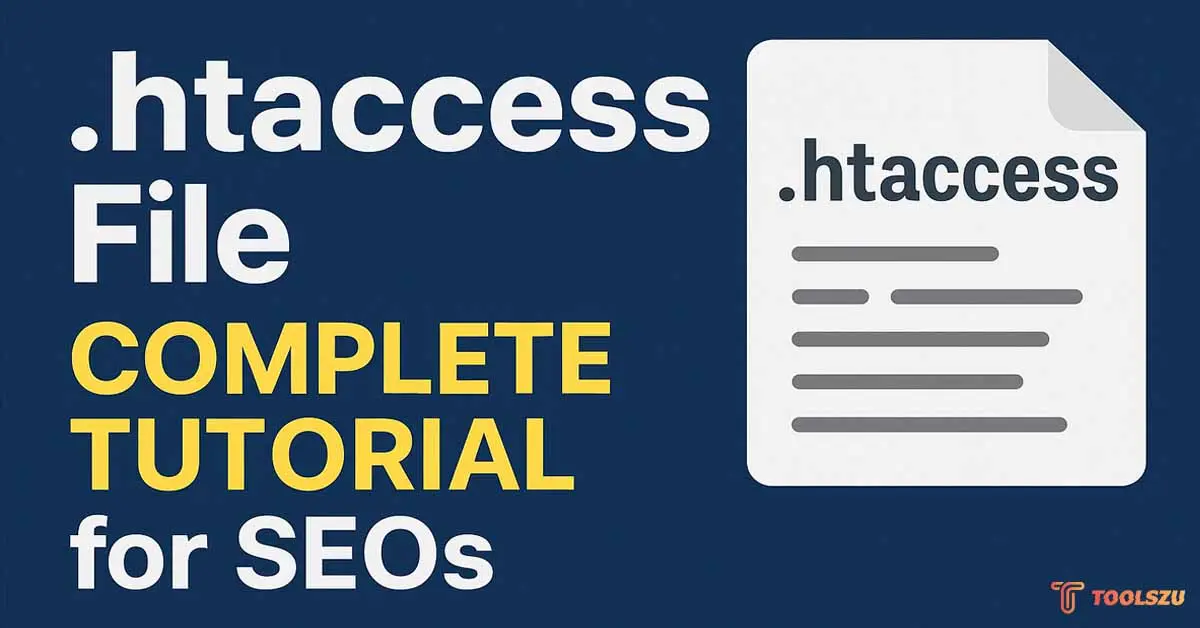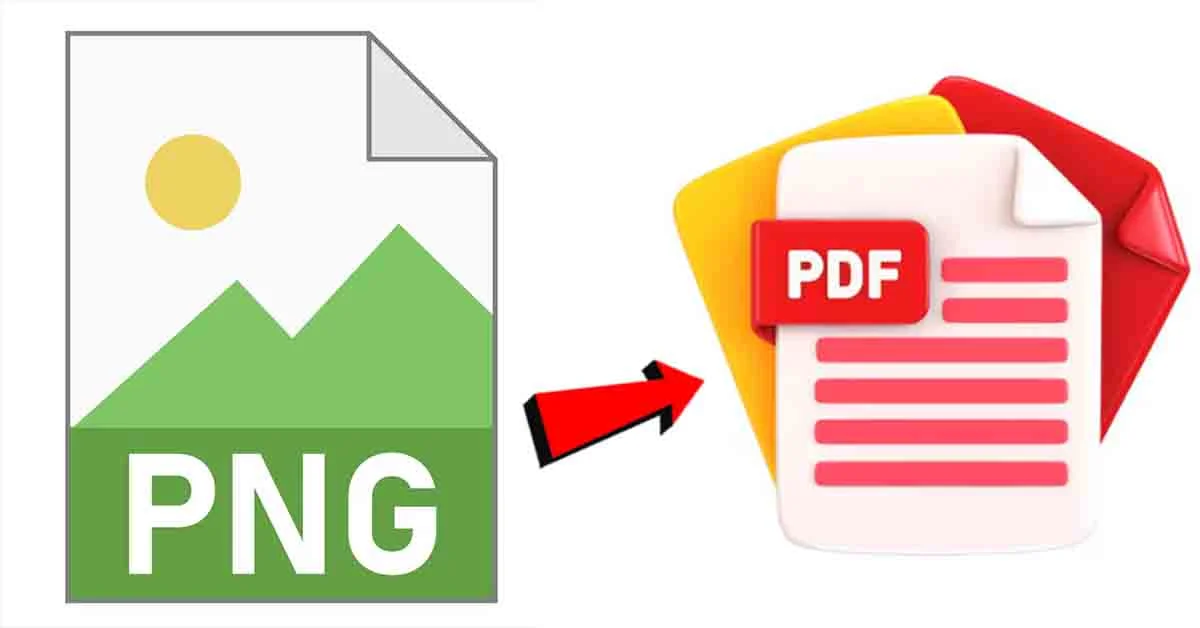- Select a profitable niche: Choose a topic about which you are enthusiastic and which has the potential to draw a wide audience. This can range from cooking to travel to technology.
- Purchase a domain name and hosting: Select a domain name that is easy to remember and related to your niche. A domain name can be purchased from a domain registrar such as GoDaddy or Namecheap. Following that, you must select a hosting company to host your website. SiteGround, Bluehost, and HostGator are some popular hosting companies.
- Choose a blog theme: Once you’ve established your domain and hosting, you’ll need to select a blog theme. A theme is a pre-designed template that determines how your blog looks and feels. On platforms like WordPress, Blogger, and Wix, you may choose from a number of free and premium themes.
- Make blog content: Begin producing content for your blog. Ascertain that your information is of good quality, educational, and entertaining. Grammarly and other tools can help you check your grammar and spelling.
- Set up SEO and Analytics: Search Engine Optimization (SEO) is the process of improving your website so that it appears higher in search engine results pages. You can watch your website traffic and assess its performance using tools such as Google Analytics.
What is a blog, and why should you start a blog?
A blog is a type of website that is regularly updated with new content, usually in the form of articles or posts. Blogs can be used for personal or business purposes and can cover a wide range of topics. There are many reasons why you might want to start a blog. Blogging can be a great way to inspire and motivate others through your writing. It can help you become a better writer by providing you with regular practice and feedback.
However, blogging is not for everyone. It requires time, effort, and dedication to create quality content and build an audience. If you’re not passionate about writing or don’t have the time to commit to it, then blogging may not be the right choice for you. I hope this helps! Let me know if you have any other questions.
WordPress vs. Blogger: Best Platform?
WordPress and Blogger are two of the most popular blogging platforms available today. Both systems have a high reputation after more than two decades of operation. The best option for you depends on your goals and how you want to use the platform.
WordPress is a more sophisticated and adaptable platform that gives you more control and flexibility. 136. It has a wide library of plugins and themes to choose from, as well as a number of customization options. 13. Although WordPress is free, you must pay for hosting, which is often less than $10 a month. Despite its beginnings as a commercial blogging platform, WordPress is the best choice for running a business.
Blogger, on the other hand, is a Google-owned, free, user-friendly blogging platform with few customization options. ³⁵. It offers free themes, although they are basic and make it obvious that you are using the platform because they are all quite similar to one another. 13. Blogger, on the other hand, is a great option for customers searching for a simple blogging platform. There are no bells and whistles, but the learning curve is quick, and you can start contributing content in minutes 13.
Overall, Blogger is a superior alternative if you want a simple and easy-to-use platform. If you are willing to put in the time and effort to learn how to use WordPress, you will be rewarded with a more powerful and adaptable platform. I hope you found this useful.
What is Blogger? and its advantages and disadvantages.
Blogger is a free, user-friendly blogging software that lets you create and publish blog posts using your Google account. When it first started in 1999, it was one of the first specialist blog-publishing platforms. Blogger is a good option for anyone seeking a simple blogging platform. There are no bells and whistles, but the learning curve is low, and you can begin posting content in 36 minutes. However, it has few customization options and offers free themes that are primitive, making it clear you’re using the platform because they’re all fairly identical.
Advantages of using Blogger:
1. Free: Blogger is a free platform for creating and publishing blog material. Blogger is an easy-to-use platform that is simple to use and browse. 6. 3. Integration with Google Services: Because Google owns Blogger, it is compatible with other Google products such as Google Toolbar, Google Adsense, and Google Docs. 6. Simple and quick setup: You can build a blog on Blogger in minutes.
disadvantages of using Blogger:
1. Minimal customization: Blogger offers minimal customization options and free themes, but they’re simple and make it clear you’re utilizing the platform because they’re all pretty similar. 13. 2. Limited scalability: Blogger is not as scalable as other blogging platforms, and future migration to another platform may be difficult. 3. **minimal support**: Blogger has few support options, making it tough to get help if you run into problems. ³.
Overall, Blogger is a superior alternative if you want a simple and easy-to-use platform.

What is WordPress and its Type?
WordPress is a free and open-source content management system (CMS) that simplifies the creation and maintenance of websites. It debuted in 2003 and has subsequently expanded to assist users in creating a wide range of sites, from blogs and portfolios to eCommerce storefronts. 1. WordPress is the most widely used website builder, powering more than 43% of all websites on the internet. 2. There are two sorts of WordPress websites.
WordPress.com and WordPress.org.
WordPress.com offers web hosting services, while WordPress.org offers self-hosted WordPress. WordPress.org is the official site for the free, open-source WordPress software, which you may install on your own web server to build your own website. 1.
WordPress is a powerful platform that allows you to build almost any type of website you can imagine, including business websites, eCommerce stores, blogs, portfolios, resumes, forums, social networks, membership sites, and pretty much anything else. 12. WordPress has various customization possibilities as well as a vast library of plugins and themes. 13. WordPress allows you to integrate social media, optimize your site for search engines, track marketing statistics, and add any other feature you need. 2. WordPress is easy to use and customize, making it a fantastic choice for both beginners and specialists. I hope you find this information useful!
Advantages and disadvantages of WordPress
WordPress is a versatile platform that allows you to create any type of website you want, including company websites, eCommerce stores, blogs, portfolios, resumes, forums, social networks, membership sites, and pretty much anything else. 12. WordPress has several customization options as well as a large library of plugins and themes to choose from. WordPress gives you the ability to integrate social media, optimize your site for search engines, track marketing statistics, and add any other feature you require. WordPress is user-friendly and customizable, making it a good choice for both novices and experts.
Here are some of the advantages of using WordPress:
Free and open-source: WordPress is free and open-source software, which means it is free to use, modify, and share. 1.
Flexible: WordPress is a versatile platform that lets you build any type of website you want.
Customizable: WordPress offers a vast library of plugins and themes from which to pick.
Community support: WordPress offers a large community of users and developers who can help you build your website by providing assistance and resources.
The following are some disadvantages of using WordPress:
Security risks: Because WordPress is a popular platform, hackers and cybercriminals flock to it.
2. Maintenance requirements: WordPress requires regular upgrades and maintenance to keep your website secure and up-to-date.
2.Learning curve: WordPress has a learning curve, especially if you wish to edit your website or use advanced features.
2. Plugin compatibility difficulties: Some plugins may be incompatible with your WordPress version or theme, resulting in website issues. ².
Overall, WordPress is a strong and versatile platform with a wide range of functionality and customization options.
However, in order to keep your website secure and up-to-date, regular maintenance and upgrades are essential. If you are willing to invest the time and effort in learning how to use WordPress, you will be rewarded with a powerful and customizable platform that will allow you to create any type of website you want. I hope you found this useful!.
How to select a profitable niche
This book includes a research-backed method for selecting a blog niche as well as 60+ blog niche ideas and examples.
It entails recognizing your abilities and interests, understanding the crucial outcomes that the audience anticipates, and evaluating the audience’s earning potential. It consists of subject-specific blogs, industry-specific blogs, and audience-specific blogs.
Listen to your heart: Choose a topic that you are interested in and love writing about. This will help you stay engaged and interested in your blog.
Investigate the specialized market value: Before deciding on a specialty, investigate its market worth. To determine whether a niche is trending and has high earning potential, use tools such as Google Trends.
Examine previous and current trends: Examine past and current patterns to uncover popular issues that can appeal to a wide audience. Determine the problem in your niche market. Determine your target audience’s problems and generate content that answers their difficulties.
Find a plethora of products to promote and sell. Once you’ve defined your niche, look for products linked to it that you can promote and sell on your blog. Determine whether your target audience is willing to pay for the products and services you’re promoting on your site. You can utilize platforms like Amazon to see if there is a market for the products in your niche.
Examine the competition: Examine your competition to determine what they are doing well and where you might improve. This will assist you in developing a distinct value proposition for your blog. Examine web advertisements in your specialist field to see what items and services are available. This will provide you with a decent notion of what your target audience is interested in. This will assist you in remaining engaged and interested in your blog over time.
Tyes of Niches and Their Imortance
A niche is a specific skill or area of competence on which an individual or company focuses. In ecology, a niche is the role that an organism plays in its environment. Habitat niches, food niches, reproductive niches, and physical and chemical niches are all examples of niches. 2. The importance of niches stems from their ability to support biodiversity and environmental stability. Each species has a particular niche that allows it to survive and thrive in its environment. 1. Niches also help to reduce species rivalry by allowing them to perform unique roles in the ecosystem. 1. Ecologists can better understand the relationships between species and their surroundings if they understand the many types of niches and how they function. This knowledge can be used to help protect and conserve ecosystems, which is vital for the health and well-being of our world.
What is a sub-niche or micro-niche?
A micro-niche, also known as a sub-niche, is a highly specific business category that provides a laser-focused service to its target population and clients. 13. Microniches are subdivisions of larger niches. 1. Outdoor goods might be a market, camping equipment could be a niche, and high-end climbing tents could be a micro-specialty. Micro niches often contain more adjectives and target a narrower audience. Micro niches provide several advantages, including pre-qualifying customers and clients early in the marketing funnel, a passionate customer base, less competition, and brand loyalty. Because there is less competition, micro niches can be extremely profitable, and they can be an excellent way to create personalized content and marketing tactics that target a specific audience. 4.
What is Web Hosting,Types and How to Buy?
Web hosting is a service that allows individuals and organizations to publish their websites on the World Wide Web. Shared hosting, VPS hosting, dedicated hosting, managed hosting, cloud hosting, and colocation hosting are all types of web hosting services.
Shared hosting: Under shared hosting, multiple websites share the same server and its resources. It is the most affordable option and is suitable for personal or small-scale websites.
VPS hosting: VPS hosting separates a single server into multiple virtual servers, each with its own operating system and resources. It is more expensive than shared hosting, but it allows you more control and freedom. 1. –
Dedicated hosting: Dedicated hosting hosts a single website on a single server. It is the most expensive option, but it delivers the highest level of control and performance.
Managed hosting: The hosting provider manages the server and its resources on behalf of the website owner. It is appropriate for people who lack the technical knowledge to manage their own server.
Cloud hosting: Instead of a single server, cloud hosting hosts the website on a network of servers. It is suitable for high-traffic websites due to its scalability and versatility.
Colocation hosting: The website owner owns the server and rents storage space in a data center with colocation hosting. It allows you unlimited control and flexibility, but administering the server necessitates technical expertise.
Follow these procedures to purchase web hosting:
1. Select a web hosting provider: There are many web hosting companies to select from, each with its own set of services and pricing options. You can compare several suppliers and choose the one that best matches your needs. 3.
2. Select a hosting plan: After deciding on a provider, you must choose a hosting plan that meets your requirements. Most service providers offer a variety of plans based on factors like storage, bandwidth, and the number of websites.
3. Register a domain name: A domain name is your website’s internet address. First, you must register a domain name and link it to your hosting account. 3. Configure your website: Once you’ve purchased web hosting and registered a domain name, you can set up your website and start adding material.
How to select suitable domain and hosting platforms
Consider the following factors when selecting a domain registrar and hosting provider:
Pricing: Compare the pricing of several domain registrars and hosting businesses to see which one best meets your needs.
Customer service: Look for a vendor who offers dependable customer service. You might need help with technical issues or have questions about your account.
Ease of use: Look for a firm that has a simple interface as well as tools for managing your name and hosting.
Security: Choose a service with robust security capabilities to protect your website from cyber threats.
Uptime: Look for a supplier who guarantees high uptime so that your website is always accessible to your visitors.
Scalability: Choose a supplier who can grow and scale with your website’s traffic.
Read online reviews and ratings of different domain registrars and hosting providers to get a feel for their reputation and service quality.
Based on these requirements, some notable domain registrars and hosting providers include:
Bluehost: Offers low-cost hosting along with a free domain name for the first year.
GoDaddy offers hosting plans as well as domain registration services.
Namecheap offers low-cost domain registration and hosting. 3. DreamHost: Offers stable hosting services as well as a money-back guarantee of 97 days.
Types of Domain Names?
Domain names are unique and human-readable addresses that we use to access websites on the internet. There are numerous types of domain names, each with its own particular properties. The most common types of domain names are as follows:
1. Top-level domains (TLDs): The highest level of domain names, used to indicate the purpose or country of origin of the domain. TLDs such as.com,.org,.net,.edu,.gov,.uk,.in, and others are available.
2. Country code top-level domains (ccTLDs): These are two-letter domain extensions that represent a certain country or region. The most common ccTLDs are.us for the United States,.uk for the United Kingdom,.in for India, and so on.
3. Second-level domains (SLDs): domain names that come before TLDs. They serve to identify the organization or entity that owns the domain name. Google on Google.com, Microsoft on Microsoft.com, and so on are examples of SLDs.
4. Third-level domains (subdomains): the domain names that come before the SLDs. They are used to identify a certain section or department inside a firm. Mail at mail.google.com, support at support.microsoft.com, and so on are examples of subdomains.
When choosing a domain name, it is vital to consider the type of domain name that best matches your needs. For example, if you are creating a website for your business, you may want to choose a TLD that represents the nature of your business. Similarly, if you are creating a website for a certain country or region, you should use a ccTLD that is appropriate for that region.
Buy Domain From Godaddy : Click Here
How .com Domain is Important for your site?
- .com domain is one of the most popular and widely used top-level domains (TLDs) on the internet. It is most commonly used for commercial enterprises, although other efforts can also benefit from the.com TLD to increase website credibility.
- A fascinating domain name is required for any size organization, at whatever stage of development. It will lure customers with a catchy phrase or a unique title; it will foster a sense of professionalism and contentment; and it will set your firm apart from others in your industry.
A good domain name provides your organization professional respect and sets it apart from the millions of get-rich-quick websites out there. 1. It raises brand presence and customer awareness. It portrays your organization as technologically savvy and innovative. It provides mobility to your digital presence, allowing you to continue creating your brand without having to start from scratch. 1. It increases your search engine ranking, attracting more customers. It will provide global marketability to your business, or you can choose to focus solely on a local region. In contrast to traditional marketing, your domain name will not expire as long as you pay the low annual fees.
How to select the fastest blog theme for 2025
Keep the following factors in mind while selecting a blog theme:
Page speed: Choose a theme that loads quickly. A fast-loading theme can improve your website’s user experience and search engine ranking. Use tools like GTmetrix and PageSpeed Insights to test the speed of various themes.
Mobile responsiveness: Choose a theme that is mobile-friendly and responsive. This guarantees that your website appears and functions correctly on a wide range of devices, including smartphones and tablets.
Customizability: Look for a theme that is extremely customizable and allows you to make changes to the appearance and layout of your website. This will help you create a distinct and professional-looking website.
SEO friendliness: Choose a search engine-optimized theme. This can boost your website’s exposure and ranking on search engine results pages.
Browser compatibility: Choose a theme that is compatible with a wide range of web browsers, including Chrome, Firefox, and Safari.
Read online reviews and ratings for different themes to get an idea of their reputation and service quality.
Based on these factors, here are some of the quickest WordPress themes for 2025:
Astra is a lightweight and versatile theme that is speedy and SEO-optimized. It is also mobile-responsive and compatible with a wide range of web browsers. You can choose between a free edition and a paid version with additional features.
Neve is a mobile-responsive, lightweight, and extremely customizable theme. It is also SEO-friendly and compatible with a wide range of browsers. You can choose between a free edition and a paid version with additional features.
OceanWP is A lightweight and highly adaptable theme that is speed- and SEO-optimized. It is also mobile-responsive and compatible with a wide range of web browsers. You can choose between a free edition and a paid version with additional features.
GeneratorPress is a mobile-responsive, lightweight, and highly customizable theme. It is also SEO-friendly and compatible with a wide range of browsers. You can choose between a free edition and a paid version with additional features.
Page Builder Framework: A fast and SEO-optimized lightweight and highly flexible theme. It is also mobile-responsive and compatible with a wide range of web browsers. You can choose between a free edition and a paid version with additional features.
How to find a keyword to generate blog content:
Both search engine optimization (SEO) and pay-per-click (PPC) advertising rely heavily on keyword research. It can help you uncover the keywords and phrases that people are searching for on search engines and then optimize your website or ad campaigns to target those keywords. To help you with this effort, you may discover a range of free and paid keyword research tools online.
Here are some tools and ideas to help you find keywords for your blog content:
Google Trends is a free tool that illustrates the popularity of different search keywords over time. It can assist you in discovering popular themes and phrases related to your field.
The Ahrefs Keyword Generator is a free tool that generates keyword recommendations based on a seed keyword. It returns a list of related keywords, together with their search volume and difficulty score.
A premium program that offers keyword suggestions, search traffic data, and keyword difficulty rankings.
React to the Public: The Public is free software that asks questions to produce keyword recommendations. It provides you with a set of questions concerning your seed keyword.
Google Keyword Planner is a free tool that displays the search volume and level of competition for specific keywords. It can assist you in identifying keywords that are both relevant to your niche and have a high search volume.
ChatGPT is a free application that generates keyword suggestions based on the input of a seed term. It returns a list of relevant terms along with their search volume.
Google Search Console is a free service that allows you to see which search queries are bringing visitors to your website. You can use it to discover keywords that are already performing well for your website and create content around them.
Google Trends Explore is a free tool that lets you track the popularity of different search terms over time. It can assist you in discovering popular themes and phrases related to your field.
Keyword Chef is a free tool that provides keyword suggestions based on a seed keyword. It returns a list of relevant terms along with their search volume.
Ubersuggest is a free tool that generates term recommendations from a seed keyword. It returns a list of related keywords, together with their search volume and difficulty score.
SEMrush: A premium tool that provides services such as keyword research, site audits, backlink analysis, and more.
Moz Keyword Explorer: A paid tool that provides keyword research, difficulty ratings, and SERP analysis.
Keyword Surfer: A free Chrome extension that provides search volume data, keyword suggestions, and on-page data 1.
10 must-have WordPress plugins for your blog
Yes, here are some essential WordPress plugins for your blog:
Yoast SEO: This plugin is a must-have for bloggers who wish to improve the search engine optimization (SEO) of their website. 1. It includes capabilities like XML sitemaps, RSS optimization, and meta tag and link optimization.
Jetpack: Jetpack is a multi-featured plugin that offers website security, performance improvement, and social media integration. 1.
Akismet: Akismet is a spam filtering plugin that can help you keep your site spam-free. 1.
WP Rocket: WP Rocket is a caching plugin that helps improve the performance of your website by lowering page load times. 2.
Optimole: Optimole is an image optimization plugin that compresses images on your website automatically to optimize page load times.
MonsterInsights: MonsterInsights is a Google Analytics plugin that allows you to track the traffic and user behavior on your website.
Contact Form 7: Contact Form 7 is a plugin that allows you to install and manage multiple contact forms on your website. It supports Ajax-powered submissions, the WordPress-integrated Akismet spam filter, and CAPTCHAs.
UpdraftPlus: UpdraftPlus is a backup plugin that aids in the protection and security of your website. It has features like automatic backups, simple restoration, and remote storage options.
Elementor: Elementor is a page builder plugin that allows you to create custom pages and posts on your website without knowing any code. It includes features like drag-and-drop editing, pre-designed templates, and responsive design.
How Do You Come Up With Blog Posts or Content Ideas?
Finding new material or blog post ideas might be challenging, but there are several methods and tools to help you. Here are some helpful hints to get you started:
1. Brainstorming: Begin by brainstorming topics connected to your business or industry. Think about what your target audience could be interested in reading.
2. Competitor analysis: Examine your competitors’ content for gaps and fresh ideas for your own.
3. Keyword research: Using keyword research tools, identify the terms and phrases that people are searching for on search engines. This could help you create search-engine-friendly content.
4. Social media listening: Monitor social media platforms to identify the themes and questions that people in your industry are discussing.
5. Forums: Attend industry-related forums to learn about people’s questions and difficulties.
6. AnswerThePublic: Use AnswerThePublic to generate content ideas based on queries people have about your industry.
7. Google Trends: Use Google Trends to find hot topics.
There are several approaches to developing new content ideas for your website. To get you started, here are a few pointers:
1. Use forums: Visit broad forums like Quora or industry-specific forums to acquire title ideas. You can find answers to questions that people shout loudly, seek online, or simply consider. Then, based on your target audience, you can solicit clicks by answering those questions. ¹.
2. Use AnswerThePublic: This tool simplifies the process of locating questions and focusing on specific, pressing concerns shared by a significant number of users. Every month, over 20,000 organizations use this software, proving that it has a lot to offer. ¹.
3. Use BuzzSumo: Learn about trending subjects and gain insight into what your target audience is interested in.
4. Use Reddit: Look for conversations and subjects in niche-specific subreddits that can inspire new blog article ideas.
5. Use Google Image Tags: Use Google Image Tags to find new content ideas. ⁴.
6. Use the Facebook Ad Library: Use the Facebook Ad Library to come up with new content ideas. ⁴.
7. Use the Reddit Keyword Research Tool: Use the Reddit Keyword Research Tool to identify new post ideas.
8. Generate fresh content ideas using Best By Links Reports: Use Best By Links Reports to generate fresh content ideas.
9. Use the Exploding Topics Tool: To develop new content ideas, use the Exploding Topics Tool. ⁴.
Scan Blog Comments: Look through blog comments for new article ideas.
Create Yearly Guides: Create Yearly Guides to bring fresh content ideas.
To find new content ideas, use the Content Swipe File.
Best Web Hosting : Hostinger ( Coupon Code : DISCOUNT7 )

How do I write a 100% on-page SEO blog post?
Writing an SEO-friendly blog post is a good method for increasing your website’s visibility in search engines. Here are some tips to help you create an entirely on-page SEO blog post:
1. Keyword Research: Start by looking up keywords relating to your topic. Use tools like Google Keyword Planner, SEMrush, or Ahrefs to determine the best keywords for your blog content.
2. Title Tag: Your title tag is one of the most important on-page SEO elements. Ensure that your title tag includes your main keyword and is no more than 60 characters.
3. Meta Description: Your meta description should not be more than 155 characters long and should include your primary keyword. It should also be phrased in such a way that people are encouraged to visit your blog post.
4. Header Tags: To split your material, use header tags (H1, H2, H3, etc.). Make sure your main word occurs in at least one header tag.
5. Keyword Density: Include your main keyword throughout your blog content, but don’t overuse it. Aim for a keyword density of 1-2%.
6. Image Optimization: Compress your images and incorporate alt tags with your main keyword.
7. Internal Linking: Include links to other relevant pages on your website to assist search engines in understanding the structure of your site.
8. External Linking: Add value to your readers’ experience by linking to high-quality external sites. ¹.
9. Mobile Optimization: Ensure that your blog post is mobile-friendly. Use a responsive design and avoid pop-ups and interstitials, which can ruin the user experience.
10. Page Speed: Ensure that your blog article loads as quickly as possible. Use tools such as Google PageSpeed Insights to identify areas for improvement.
How to Write Reader Engaging Blog Post?
Writing an intriguing blog post is a wonderful way to attract readers and keep them coming back for more. Here are some suggestions to help you write a reader-friendly blog post:
1. Begin with a compelling headline: Because your title will be the first thing your readers see, it must be fascinating and attention-grabbing. Use statistics, strong adjectives, and compelling verbs to make your title stand out.
2. Include storytelling: People adore stories, so try to incorporate some into your blog post. Include tales, personal experiences, or case studies to make your piece more relatable and engaging.
3. Use a conversational tone: By using a conversational tone, you can connect with your readers and make your blog post more interesting. Use simple language, use acronyms, and ask questions to make your post more conversational.
4. Use subheadings: Subheadings help organize your material and make it easier to read. In your blog piece, use subheadings to introduce distinct sections or concepts.
5. Use images and videos: Images and videos can help you break up your content while also making your blog post more visually appealing. Make use of high-quality images and videos that are relevant to your theme.
6. Use bullet points and lists: Bullet points and lists can help your material be more easily scanned and read. Use bullet points and lists to highlight important points or ideas in your blog article.
7. Finish with a call to action: A call to action might compel your readers to take action after reading your blog content. In order to attract your readers to leave a comment, share your material on social media.
Also Read : VPS vs Dedicated Server: Which Hosting Solution Offers Better Performance?
How to Make Money or Monetize a Blog?
Monetizing a blog could be a great way to make money. There are numerous ways to monetize your blog, such as becoming a freelance blogger, selling ebooks to your audience, creating and selling online courses, launching a coaching or consulting business, offering a paid membership plan, making money with display advertising (banner ads), becoming an affiliate marketer, generating revenue with sponsored posts and reviews, selling physical products to your audience, selling digital products to your audience, launching a virtual sumo team, selling physical products to your audience, selling digital products to your audience,
To write a 100% on-page SEO blog article, use these guidelines: Begin by researching relevant keywords for your topic, then use header tags (H1, H2, H3, etc.) to segment your content, use your primary keyword throughout your blog post but don’t overdo it, optimize your images by compressing them and adding alt tags that include your primary keyword, link to other relevant pages on your website to help search engines understand the structure of your site, and link to high-quality external sources to provide additional information.
To create an interesting blog post, start with a captivating headline, use storytelling, write in a conversational tone, use subheadings, images and videos, bullet points and lists, end with a call to action, and more.
I hope you find these approaches useful in monetizing your blog, creating a blog post with 100% on-page SEO, and writing a blog post that engages your readers.
Also Read : Ultimate SEO Checklist for 2025





